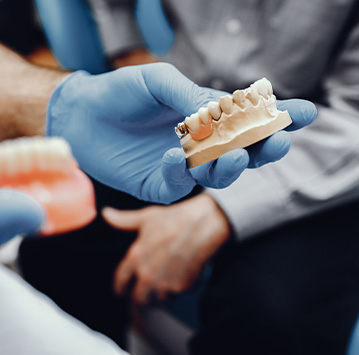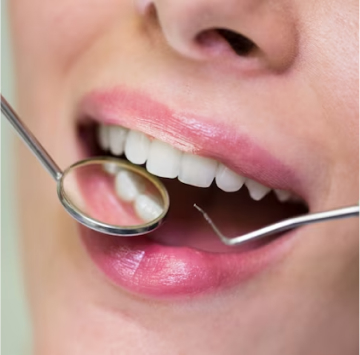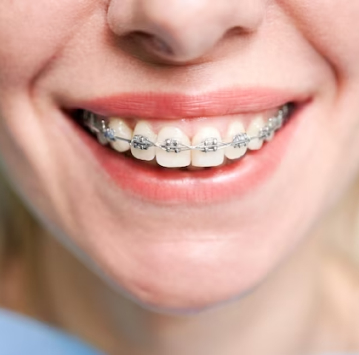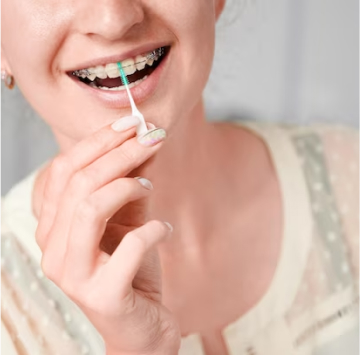Teeth whitening
Dental Aesthetics
Teeth whitening is one of the most indicated treatments when we talk about dental aesthetics.
It consists of applying hydrogen peroxide or carbamide whitening agents to the surface of the teeth, lightening the original color by several tones, and achieving a whiter and brighter appearance.
Types of Whitening:
Led or cold light: This treatment is performed in a clinic. After isolating the patient’s lips and gums, the whitening agent and the cold light or LED lamp are placed to enhance its effect. The treatment lasts approximately one hour.
Transparent Splints: It consists of applying a whitening gel directly to the teeth using soft splints tailored to the patient.
Combined Treatment: It is the most recommended treatment, especially if it is the first time that whitening is performed. It consists of the combination of treatment with Led Light and home treatment with splints. The treatment lasts approximately two weeks.
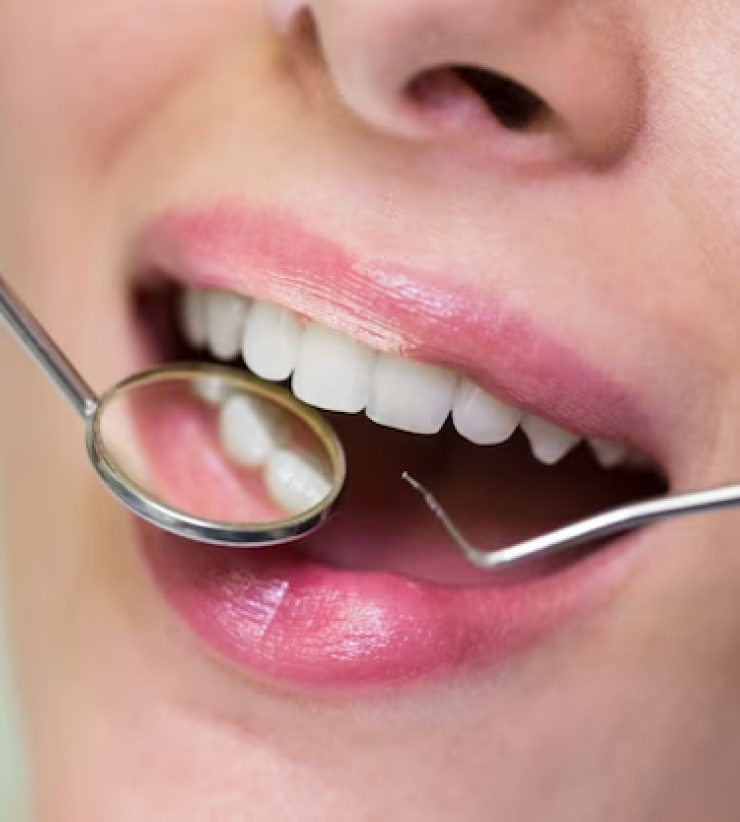
What to expect from teeth whitening?
Frequent questions
The shades that will be whitened cannot be guaranteed as it depends on many factors. The type of enamel, the initial tone of the teeth, the patient’s habits, etc. greatly influence the final result. In the assessment consultation prior to treatment, these doubts can be resolved effectively.
We do not recommend this type of treatment in smokers, since the results are very limited.
It is normal for sensitivity to increase during treatment, disappearing completely when it is finished.
You should not eat strongly colored foods during the weeks that the treatment lasts. We also do not recommend the intake of acidic foods.
Composite veneers
Composite veneers are an aesthetic dental treatment that aims to improve the appearance of teeth.
These veneers are thin sheets of composite resin that adhere to the surface of the teeth to correct certain imperfections.
Candidates:
They are ideal for correcting small imperfections, in young patients who do not want to carve their teeth and in patients who want a very natural result. They are not recommended for smokers.
Maintenance:
We recommend cleaning and polishing veneers once a year.
Advantages of composite veneers
- Minimally invasive: Normally there is no need to carve or abrade the teeth, they are attached directly to the enamel
- Immediate correction: They are performed in a single visit to the dentist, usually without anesthesia.
- Cost: They are usually less expensive than porcelain veneers.
- Repairs: If damaged, they can often be easily repaired.
Disadvantages of composite veneers
- Durability: They are not as durable as porcelain veneers and can be susceptible to staining and wear over time.
Ceramic veneers
We design custom porcelain veneers
Ceramic veneers, also known as porcelain veneers, are very thin sheets of ceramic that are custom designed to adhere to the front surface of your teeth.
These veneers are used to improve dental aesthetics, especially when there are problems with the color, shape or position of the teeth. They are made primarily of porcelain, which gives them a very natural and stain-resistant appearance.
It generally requires at least two or three visits to the dentist. During the first visit, the surface of the tooth is prepared, which may include light grinding or grinding of the enamel to ensure a good fit. A digital scan is then taken of the teeth, which is sent to a dental laboratory to make the veneers. At the next visit, the veneers are tried on, adjusted if necessary, and then cemented in place.
Advantages of ceramic veneers
- Natural aesthetics: Porcelain has a translucency similar to natural tooth enamel, giving the veneers a very realistic appearance.
- Stain resistance: Unlike composite veneers, porcelain veneers are highly resistant to stains.
- Durability: They can last for many years with proper care.
Disadvantages of composite veneers
- Irreversibility: To fit veneers, a small amount of tooth enamel must be removed, making the procedure irreversible.
- Cost: They are generally more expensive than composite veneers.
- Fragility: Although durable, porcelain veneers can break or peel off if subjected to strong forces, such as biting on hard objects.
- Candidates: They are ideal for people looking for a more aesthetic and uniform result. Ideal for smoking patients since they do not stain.
- Cares: It is essential to maintain good oral hygiene. Although ceramic veneers are resistant, it is advisable to avoid biting hard objects and follow the dentist’s instructions for their care and maintenance.
Ceramic veneers without carving
These types of veneers are very thin ceramic sheets that are adhered directly to the enamel without carving. The indications for this type of veneers are very limited, normally in patients with spaces between teeth and very small teeth. They are minimally invasive and the treatment of choice if the patient is a candidate.
As we age, our teeth can become worn, discolored, shifted, or lost, which can lead to an aged appearance of the mouth and smile. Dental rejuvenation seeks to address these changes to restore a more youthful appearance. From simple whitening to ceramic veneer treatment, there is a wide range of possibilities to improve the appearance of our teeth.

Other services
Discover what we offer at Mahfoud & Serrano






